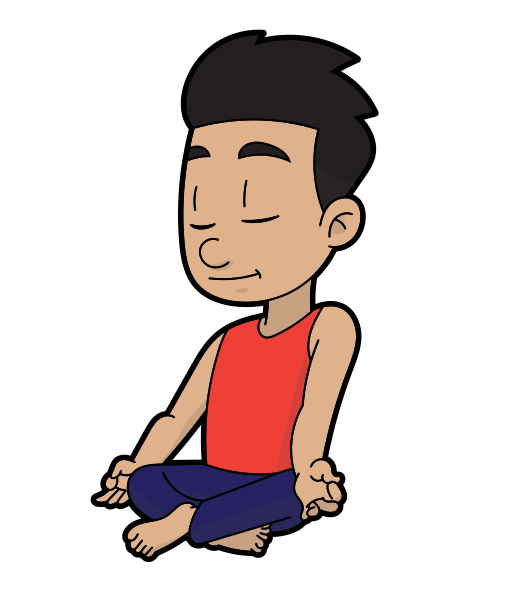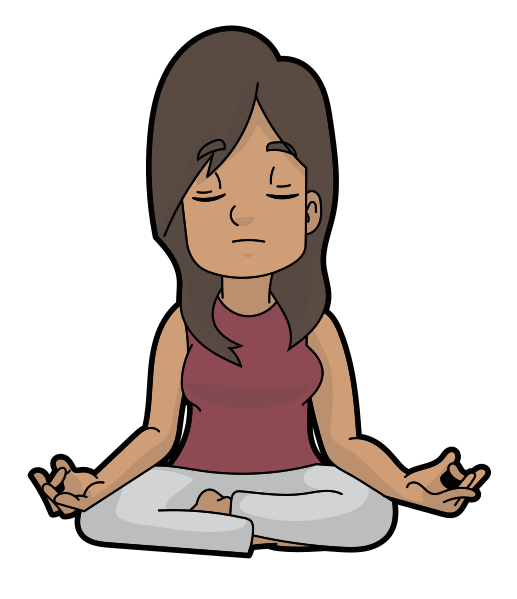Becoming mindful of our breath is one of the cornerstones of mindfulness, and a practice that benefits us in many ways. Learn more about Following Your Breath Mindfully, and before trying this practice, you may wish to ensure that you’re using Abdominal Breathing, where you’ll also find a link to my posts on following your breath mindfully.
Following Your Breath Mindfully

In a previous post about our breath we looked at the difference between abdominal breathing and breathing from your chest, and how abdominal breathing can help alleviate stress and calm your body, mind and emotions.
It’s as simple as bringing your attention to your breathing for a few minutes, or even just a few breaths. This is easier said than done, however, as our minds tend to wander a lot at the best of times, and when we’re in distress, it’s even more difficult to stay focused on our breath.
In the next few posts we’re going to practice some exercises to help keep your mind focused on your breathing, starting with Following Your Breathing By Counting Your Breaths.
Mindfulness of the Breath Meditation

In previous posts we practiced Following Our Breathing By Counting Breaths and Following Your Breathing By Measuring Breaths. Now we’re going to learn a brief Mindfulness of the Breath Meditation.
You can do this meditation either sitting cross-legged on a cushion the floor, or on a firm chair with a straight back and preferably no armrests. You want to be in a comfortable but alert posture, with your back straight but not stiff, you shoulders relaxed, on your hands resting in your lap or on your knees.
When you’re ready, start the video below to play the guided mindfulness of the breath meditation.
Meditation Tips: Mind Wandering
Meditation Tips: Dealing With Distractions
Abdominal Breathing to Calm and Relax
When you’re feeling stressed or overwhelmed, one of the most effective ways to calm your body, mind and emotions is to pay attention to your breathing. When you focus your attention on your breath, things start to slow down. Physiologically, your heart rate slows, your blood pressure drops, and any tightness or tension you feel tends to relax. Breathing mindfully also calms your emotions, making them more manageable, and helps slow down a racing mind.
In the next post, we’re going to learn a few techniques to help you follow your breath, but first, it’s important to ensure that you’re breathing in a way that helps calm you, rather than in a way that can increase your level of stress.
What Is Acceptance And Why Is It So Important?
 Acceptance can be a difficult notion to grasp. If you are suffering or in pain, the idea that you should practice acceptance can seem counterintuitive. So what do we mean by acceptance, and how is it beneficial?
Acceptance can be a difficult notion to grasp. If you are suffering or in pain, the idea that you should practice acceptance can seem counterintuitive. So what do we mean by acceptance, and how is it beneficial?
- external events outside our control
- spontaneous emotions, thoughts and memories
- uncertainty
- pain or physical sensations
Bringing Mindfulness into your Daily Life
 Mindfulness isn’t just something we practice when meditating: anything we do throughout the day, we can learn to do mindfully. Once we learn to bring mindfulness into our everyday lives, we can reduce a lot of the stress, anxiety, depression and anger that tends to build up when we go through life relatively mindlessly.
Mindfulness isn’t just something we practice when meditating: anything we do throughout the day, we can learn to do mindfully. Once we learn to bring mindfulness into our everyday lives, we can reduce a lot of the stress, anxiety, depression and anger that tends to build up when we go through life relatively mindlessly.
It would be great if we could go about our whole day completely mindful, bringing our full attention to whatever we’re doing, while we’re doing it, and not getting carried away by distractions or thoughts of the past or about the future. But although mindfulness sounds simple, it does require effort. It takes a continual effort to notice when our mind’s started to wander and keep bringing it back to the present, and it’s not something most of us can do all day long.
So instead of striving go about the entire day mindfully, it’s good to start with some small steps, and find ways to gradually add more mindfulness into your activities throughout the day. Below are some ways you can start bringing mindfulness into your days on a regular basis.
Choose One Routine Activity to Do Mindfully Every Day Read More
Three Minute Breathing Space
In a couple of recent posts, we looked at some things you can do to help stop stress and anxiety from becoming overwhelming, and to give yourself a breathing time out from stress, anxiety and depression. In this post, we look at the Three Minute Breathing Space, another great way to manage stress and anxiety, and to help your emotions from becoming overwhelming.
The Three Minute Breathing Space was developed as part of the Mindfulness-Based Cognitive Therapy program for people with depression. Like the Breathing Time Out, it’s a way to bring your attention to the present, give yourself a break from whatever stress or emotions have been building up, and then return to the rest of your day, more refreshed and focused on the present.
Take a Breathing Time Out
 In a recent post we looked at a couple of exercises you can use to help stop stress and anxiety from becoming overwhelming. Another technique you can use throughout the day to manage stress and anxiety, and to help keep strong emotions and feelings of depression and anger from becoming overwhelming, is to give yourself a Breathing Time Out.
In a recent post we looked at a couple of exercises you can use to help stop stress and anxiety from becoming overwhelming. Another technique you can use throughout the day to manage stress and anxiety, and to help keep strong emotions and feelings of depression and anger from becoming overwhelming, is to give yourself a Breathing Time Out.Just as a time out can be an effective way to help children calm down when they are acting out and starting to get out of control, when our thoughts and emotions start getting carried away, a time out is a great tool to help calm ourselves.
